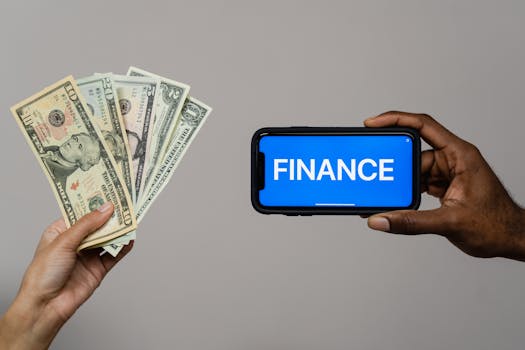Money Management
Smart Ways to Prioritize Expenses When Money Is Tight
Discover practical strategies to prioritize expenses and stretch your budget when money is tight Tips include cutting nonessentials automating payments and using community support
Advertisement
Stress can creep in fast when your paycheck doesn’t stretch as far as you’d hoped. Maybe you’ve found yourself scanning receipts, debating what to cut and where you can save. Learning to prioritize expenses isn’t about deprivation—it’s about feeling confident your most important needs are covered, even during lean months.
Financial pressure is all too common, and the stakes feel higher when each dollar counts. Strong money habits don’t always appear overnight, but building them can give you stability and assurance no matter what your budget looks like.
This guide explores practical, step-by-step methods to prioritize expenses, using realistic examples, checklists, and strategies that anyone can try. Discover how to take control of your budget and relieve financial uncertainty.
Lay the Foundation: Clarify Non-negotiables and Assess Reality
Start by sorting your true essentials from everything else. This two-minute task creates immediate clarity, letting you feel in control and reducing money-related anxiety almost instantly.
Grab a notepad. Write your top five survival expenses in big letters. Knowing which bills can’t wait guides every other financial decision you’ll make this month.
Use Your Monthly Statements as a Roadmap
Line up last month’s bank or credit card statements. Highlight every payment related to food, housing, utilities, transportation, and any mandatory insurance. Seeing these grouped paints a clear picture of where you must allocate funds first.
A regular script you might use: “Mortgage first, groceries second, gas to get to work.” Keep these categories at the top of your list—they’re your non-negotiables for stability.
Now, glance at variable expenses: any shopping beyond food, streaming services, eating out, or hobbies. Anything not crucial now becomes a candidate for trimming or pausing.
Minimum Payments Prevent Bigger Problems
Review all debts. Focus on making at least the minimum payment for each right away—even if you pay just $13 on a credit card. This protects your credit and keeps fees from ballooning.
Many people ignore small debt payments, thinking they can catch up later, but the late fees and hits to your report stack up quickly. Set reminders so you never miss a due date.
Script for a reminder: “Credit card minimum—set a phone alarm for the 14th of each month.”
| Essential Expense | Why It Matters | Missed Payment Risk | Immediate Action |
|---|---|---|---|
| Rent/Mortgage | Secures housing stability | Eviction or foreclosure | Pay first, even if adjusting elsewhere |
| Utilities | Ensures power and safety | Loss of service, late fees | Set up auto-pay if possible |
| Groceries | Supports daily needs | Poor nutrition, higher medical costs | Plan basic weekly meal list |
| Transportation | Your access to work and essentials | Job risk, missed obligations | Budget minimum gas or pass |
| Minimum Debt Payments | Preserves credit score | Mounting interest, fees | Schedule by due date |
Slice Discretionary Spending With Purposeful Choices
Once you’ve locked in your true essentials, make cuts confidently by focusing on what adds value—or doesn’t. This approach creates room for breathing without guilt.
Discretionary spending bleeds budgets quietly. Track and evaluate each area, looking for quick changes you can live with. Then, take action the same day you review.
Pinpoint Spending That Subtracts Value
Read through last month’s discretionary expenses. Underline those purchases that didn’t truly improve your day or well-being. Common types include forgotten subscriptions, random takeout, and in-app purchases.
Pause before judging yourself—this is about clarity, not shame. Be honest when labeling items you could avoid until times are steadier.
- Cancel streaming platforms you don’t use weekly to reclaim $15–$30 each month. Mark your calendar to revisit the service later.
- Meal prep two days a week and skip delivery apps, banking $30–$50 per week. Use those leftovers for tomorrow’s lunch with zero effort.
- Review app subscriptions on your phone every three months. If “cancel” feels hard, ask if you used the app last week. If not, remove it temporarily.
- Unsubscribe from promo emails to avoid impulse shopping. Consider saving the first email from each store instead as a “wishlist” for the future.
- Swap pricey entertainment for library books, park days, or community events. Note each free activity in your calendar as a reminder you’re not missing out.
Try this phrase after a cut: “This isn’t forever—just until my top expenses feel under control again.”
Redirect Savings to Prioritize Expenses
Each dollar trimmed from nonessentials should be sent straight to a priority expense. For example, transfer the savings from canceled streaming right into your grocery fund as soon as they clear.
Use your banking app or a cash envelope for visible progress. Tracking these micro-wins turns cuts into positive steps, building momentum with every new deposit to an essential bucket.
- Add all restaurant savings to a grocery envelope for more at-home meal options. Each week, watch the envelope total rise as your confidence grows.
- Apply ride-sharing savings toward a bus pass or tank refill. This swap keeps you moving to work and errands with less worry.
- Allocate gift card sales (unused ones from the drawer) toward utility payments. Every small sum can lighten the pressure on your monthly budget.
- Schedule auto-transfer of $10 weekly from discretionary to debt payments. Watching your minimums drop can be motivating and makes the process feel proactive.
- Celebrate each weekly or monthly priority payment by noting your progress, like tally marks on a whiteboard—visual reminders keep you motivated through leaner stretches.
Prioritize expenses with real-time action, not just good intentions.
Apply the 50/30/20 Rule for Balanced Choices
The 50/30/20 rule shapes your plan by setting clear spending boundaries. Even with a tight budget, this method helps keep essential, discretionary, and saving/debt in check.
You can adapt this split even if you have little left to save. The percentages serve as guardrails, not chains.
Adapt the Rule When Income Drops
If income goes down, shift your percentages. Your script becomes: “85% essentials, 10% flex, 5% savings.” Balance is relative—compressed budgets just intensify the focus on must-haves, but the distribution habit gives you structure.
Start each month asking: “What counts as essential for me right now?” Keep the 50/30/20 logic, but skew it as life changes. Adjust, don’t abandon, the framework.
This method makes prioritizing expenses easier—try using a pie chart on a sticky note showing where each dollar lands this month.
Create a Shortlist of Flexible Expenses to Cut First
Write down your three least-used subscriptions, the two outings that felt skippable, and any splurges. Label these as your “cut first” shortlist and place it where you’ll see it daily.
Before buying anything discretionary, check the list: “Is this on my cut list?” If so, skip it and move the money to an essential bucket.
The shortlist acts like a guardrail, automatically prioritizing expenses and protecting your must-haves.
Build a Weekly Check-in for Course Correction
A weekly 10-minute review prevents drifting off-plan and brings awareness before a small problem grows. This ritual helps you course-correct while decisions are still easy to adjust.
Avoid waiting until the end of the month—mid-month tweaks feel manageable and boost your confidence each time you find a new area to optimize.
Step-by-Step Script for Productive Weekly Reviews
Pick the same time each week (Sunday evening works well). Say out loud: “This is my check-in. Let’s see what needs attention before payday.” Consistency turns this into a helpful habit instead of a chore.
Compare updated balances in your account and cash envelopes. Read off the top three balances: essentials, flexible, and savings/debt. Just hearing them can prompt new adjustments or priorities.
Write down one win—however small—from the week. Whether you canceled a $7 subscription or found leftover lunch, these reminders reinforce progress and help prioritize expenses every week.
When to Rebalance and When to Ride It Out
Have a rule: if flexible spending tips above your planned limit by $20 or more, reallocate that extra immediately—don’t wait. Move the money to rent, groceries, or your safety cushion.
If the balance is close but not over, track it without making big changes—sometimes small fluctuations normalize in the next week. The ritual is about pivoting when needed, not obsessing over every penny.
This structure lets you adjust as you go and keeps your plan alive and practical, not rigid or punishing.
Engage Your Circle for Resources and Ideas
No one can do it all alone. Leaning on your community and online tools offers hidden value—often, friends or relatives have walked a similar path or know local resources you’d never hear about otherwise.
Just sending a simple, honest text—“Know any ways to stretch a grocery budget?”—can bring unexpected, actionable advice. Prioritize expenses with every suggestion you find useful.
Frame Requests Clearly to Boost Helpful Responses
Be upfront about your needs to get the most relevant tips. “I’m making cuts for now and need ways to get by with half my usual spending” sets a positive, focused tone when you reach out.
Look for community swap groups, local food pantries, or even financial counseling services. Most people are glad to share the names of organizations or apps they’ve used themselves.
Remember, crowdsourcing insight isn’t asking for charity—it’s about gathering strategies that save you time and reduce stress while you prioritize expenses.
Share Concrete Success Stories With Others
Swapping mini-successes creates a cycle of encouragement. For example, if a friend saved $80 by carpooling or found a free childcare option, document it and try the same move.
Use the phrase: “If it worked for them, I can test it and report back.” Collective action smooths rough patches, making money management less isolating and more practical in real life.
Each win keeps priorities visible and strategies fresh, especially when times are tight.
Keep Motivation High With Simple Rewards and Visuals
Personal finance is a marathon, not a sprint. Self-made rewards and visible progress signals make a tough season feel hopeful, encouraging you to keep prioritizing expenses and stick to the plan.
Each step you take should have a payoff, no matter how modest. Think stickers, color-in charts, or micro-splurges tied to milestones on your personal money map.
Use Colorful Progress Trackers
Visual cues—like filling in boxes for every week your bills are paid on time—create a sense of achievement. Hang your tracker on the fridge, using bright markers to highlight each financial win week by week.
The routine of coloring a square, tallying a total, or checking a box keeps your journey concrete. Progress feels tangible, even when budgets remain tight.
This analog approach boosts momentum and positivity. Consider photographing your tracker each month to see growth and remind yourself of your resilience.
Choose Real-World Mini-Rewards for Milestones
Set a mini-reward for every 30 days you meet your plans—think a $5 coffee or timed break at your favorite park. These small treats acknowledge hard work and re-energize your process.
Before you claim a reward, pause and say: “I held the line this month. I can enjoy this moment.” Celebration anchors the habit of prioritizing expenses, helping cement it long-term.
As milestones stack up, the reward system creates anticipation for the next win, not just relief at surviving another tight budget month.
Paving the Path Forward With Adaptable Habits
Small, consistent steps set you up for broader stability. Instead of scrambling in crisis mode each month, turn these techniques into regular habits that flex with your needs and income.
The strongest plans recognize that both priorities and available funds change season by season. Revisit your approach every few months so your process evolves as your life does.
Automated tools, rituals like weekly reviews, and sharing stories with others all help you stick to the essentials and shift quickly when income changes. Over time, prioritizing expenses becomes less daunting.
Frequently Asked Questions
- What if my income isn’t enough to cover even basic expenses? Reach out for immediate support: local nonprofits, faith organizations, or community assistance programs often help with rent, utilities, or groceries. Prioritize only survival needs until income rebounds.
- Is it better to pay extra on debts while money is tight? Aim for minimum payments first to avoid fees, then redirect any surplus to the smallest balance. Free up cash flow and build momentum by knocking out minor debts one at a time.
- Can I prioritize savings when my budget is strained? Even $5 a pay period adds up. Label this as your emergency cushion—having a fallback can lower stress and help you avoid new debts if a bill comes up unexpectedly.
- How do I handle requests for money from friends or family? Be honest and direct: “I’m working through my own priorities right now. I can’t give, but I’m here for advice or support.” Protect your essentials first.
- Is there a quick way to organize my bills without using apps? Use the envelope method: sort cash or checks by bill category, labeling each envelope. Tracking paper statements and due dates with sticky notes or a wall calendar also works well when tech isn’t your thing.





